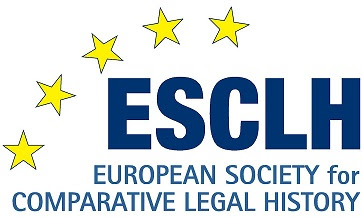(Source: Brill)
ABOUT THE BOOK
In Conflict in Fourteenth-Century Iberia, Kagay and Villalon trace the complicated economic military, political, and social background of the relationship of Iberia’s two greatest Christian states of the fourteenth century, Castile and the Crown of Aragon and their rulers, Pedro I (r. 1350-1366/69) and Pere III (r. 1336-1387). Besides chapters discussing the War of the Two Pedros (1356-1366) and the Castilian Civil War (1366-1369), the authors provide extended treatments of the strategical and tactical elements of the conflicts, the parliamentary, diplomatic, and governmental developments that occurred because of the conflicts as well as their social and political aftermaths. This work, along with authors’ earlier book on the battle of Nájera (1367) provides a much-needed review of Iberia’s violent fourteenth century.
ABOUT THE AUTHORS
Donald J. Kagay, Ph.D. (1981), Fordham University, is retired from Albany State University and is currently an adjunct professor at the university of Dallas. He has edited nine collections of essays, has written four monographs, two of which with Andrew Villalon, and forty-five articles. He is one of the founders of the Texas Medieval Association (remaining its secretary treasurer), De Re Militari, and the Georgia Medievalists Group
L. J. Andrew Villalon, Ph.D. (1984), Yale University is retired retired from the University of Cincinnati as a professor emeritus in the Department of Romance Languages and Literatures. He is the past president of De Re Militari and the Texas Medieval Association and the recipient of several grants including a Fulbright. Villalon has co-written two monographs, co-edited six collections, and published over a dozen articles in journals and collections.
TABLE OF CONTENTS
Contents
Acknowledgments
Authors’ Academic Biographies
Genealogies, Maps, and Tables
Abbreviations
Introduction
Part I: Background to the Conflict
1. Spain: a Geographical Miscellany
2. Christian Rival States of Medieval Iberia
3. The Much-Contested Frontier (Thirteenth and Fourteenth Centuries)
4. Two Royal War Leaders
Part II: Chronology of the Conflict
5. War of the Two Pedros: Causes and First Months (1356–1357)
6. The Middle Years: Expanding Warfare (1357–1363)
7. Papal Efforts at Achieving Peace in the War of the Two Pedros (1357–1363)
8. The Final Campaigns (1362–1365)
9. Aragon’s Victory Morphs into Castile’s Civil War (1365–1366)
Part III: Organization of the Conflict
10. Administration and Financing of the Contending Armies
11. Command Structures in the War of the Two Pedros
12. The Equipment, Intelligence-Gathering Activities, Personnel, and Tactics of Iberian Armies of the Mid-Fourteenth Century
13. Parliamentary Developments in the Crown of Aragon and Castile during the War of the Two Pedros
14. Diplomatic Dealings in Wartime and in the Immediate Aftermath (1356–1366)
15. The Fate of the Aragonese and Valencian Jews during the War Years and Beyond (1350–1369)
16. The Fate of Four Frontier Towns Touched by War (1356–1372)
17. Elionor of Sicily (1325–1375): Pere III’s Third Wife, Queen and Important Administrator
Part IV: Aftermath of the Conflict
18. Castilian Aftermath 1: the Campaign and Battle of Nájera
19. Castilian Aftermath 2: Later Events and Consequences
20. The Aftermath of War in the Crown of Aragon
Conclusion
Appendix I: Correspondence between Pere III of Aragon and Pedro I of Castile, 1356
Appendix II: Pere III’s Administrative and Military Letters, 1356–1365
Appendix III: Pedro I’s Administrative and Military Letters, 1364–1365
Appendix IV: Chronicle Chapters of Ayala and Pere III, 1359–1369
Bibliography
Index
More information with the publisher.

No comments:
Post a Comment
Note: Only a member of this blog may post a comment.